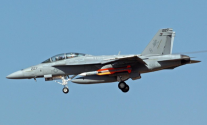Coyote II is meant to be part of a layered cake of C-UAS. Which is critical here because it’s not Coyote II or EW or lasers but an all of the above.
The price calculation is a strawman argument really because end game is well the Shahed is cheap the missile expensive what the missile protects is more expensive. Let’s face it a 10million dollar missile is cheaper than a 500 million dollar hospital or billion dollar power plant.
I agree with the sentiment that that cost factor of interceptor vs. missile is not as important as some make it out to be. Obviously you don't want to shooting down $50,000 drones with $100 million missiles, but that is not what we are talking about here. On top of that, countries like China and the United States don't need to be as worried about those things as much since they have the money to afford a higher end solution.
As you pointed out, the Coyote II is part of a system of systems designed to target various UAS groups using various technologies. This isn't the only solution they are working to deploy, nor is this expected to cover all potential UAS threats.
I'd also like to point out that the order is a for a minimum of 6,700 Coyote II interceptors along with associated equipment. So there is probably a good chance more than 6,700 units with be delivered over the next couple of years.


